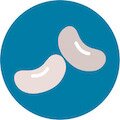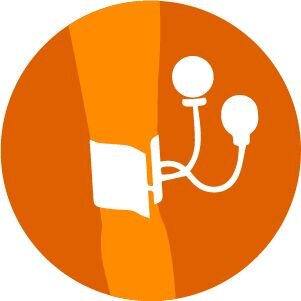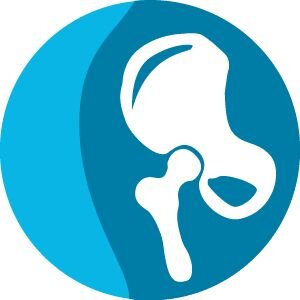How Much Calcium Do Beans Have? – Calcium-Rich Beans

They’re nutritious, delicious, and easy on the wallet. They’re beans! Beans have been cultivated for around 6,000 years— and they’ve even been found in ancient Egyptian tombs dating back at least 4,000 years!
Beans were prized even back then for their protein and versatility in meals. And it’s little wonder why. After all, did you know that three different beans appear in the Top 29 Plant-Based Sources Of Calcium?
See more about these 3 beans and why they’re so good for you below:
Beans: Nutrition Overview
Beans aren’t a one-trick pony. They don’t just have one or two nutrients. They’re packed with several like protein, calcium, magnesium and fiber.
Take calcium for instance. There are some beans that have 1-2 mg per 100 grams; nothing special. But several other beans are loaded with more! Here are the top 3 calcium-rich beans:

Cannellini beans – 55 mg of calcium per 100 grams
Cannellini beans are a type of white kidney bean that are larger than the more popular red kidney bean. And if you’ve heard of or enjoy Italian White Bean Soup, it’s cannellini beans that make that dish! But they’re more than just tasty. Because these fiber-rich beans are also linked to a reduced risk of heart disease. That’s a nice little “bonus” for this yummy soup!
Calories | 68 |
Protein | 5 g |
Total Carbohydrate | 15 g |
Dietary Fiber | 4 g |
Sugars | 0 g |
Total Fat | 0 g |
Calcium | 55 mg |
Sodium | 85 mg |
Iron | 1.5 mg |

Navy beans – 47 mg of calcium per 100 grams
Who knew a traditional camping favorite was so packed with calcium?
Navy beans are another type of kidney bean, which got their name because the 19th century U.S. Navy relied heavily on them for nutrition. What’s more, navy beans are rich in fiber, can lower cholesterol levels, and may improve heart health.
Calories | 140 |
Protein | 8 g |
Total Carbohydrate | 20 g |
Dietary Fiber | 5 g |
Sugars | < 1 g |
Total Fat | < 1 g |
Calcium | 47 mg |
Potassium | 288 mg |
Phosphorus | 134 mg |
Magnesium | 47 mg |

Edamame beans – 63 mg of calcium per 100 grams
Did you know edamame beans are immature soybeans in their pod? That may be interesting, but what’s truly amazing about edamame beans is they are one of the precious few “complete protein” sources on earth that aren’t an animal food. That means edamame beans have the 9 essential amino acids your body needs for countless bodily functions; amino acids that your body cannot make on its own.
Of course, just like the other beans in this list, soybeans are chock-full of fiber too— around five grams per cup. If you’re thinking of eating edamame, it’s best to lightly steam them, add some salt, and serve. Just enjoy the beans inside, as there’s no need to eat the pod they come in.
Calories | 141 |
Protein | 12 g |
Total Carbohydrate | 9 g |
Dietary Fiber | 5 g |
Sugars | 2 g |
Total Fat | 5 g |
Calcium | 63 mg |
Potassium | 436 mg |
Sodium | 6 mg |
Phosphorus | 170 mg |
Magnesium | 64 mg |
Health Benefits of Beans
All those nutrients in beans provide some impressive benefits throughout your body. So read on, because these bean benefits tend to fly under the radar compared to other, more popular health foods:

Weight Loss
Eat your beans and watch your waist shrink? According to one study of 1,475 bean eaters, yes! These 1,475 bean eaters were compared to a group of non-bean eaters. Participants were taken from the comprehensive National Health and Nutrition Examination Survey (NHANES) and a strictly bean-related study was conducted next.
Researchers found the bean eaters had lower body weight than non-bean eaters. The bean eaters also had a 23% reduced risk of larger waist size, a 22% reduced risk of obesity, and baked bean eaters specifically had lower blood pressure.
One possible explanation for the reduced risks in weight-related measures is the large amount of fiber in beans. Some studies show fiber can increase satiety, the feeling of fullness after eating a meal.

Heart Health
Beans can have a positive effect on your heart and circulatory system. A review of 26 randomized, controlled human trials showed bean consumption on average dropped LDL (bad) cholesterol 5% versus non-bean diets. And each trial lasted at least three weeks.
Another review of 5 studies that followed bean eaters proved a 14% decrease in ischemic heart disease (reduced blood supply to the heart).
Yet another showed 11 different trials where bean consumption alone lowered fasting blood sugar levels 18% and insulin levels 51%! In the same review, a separate 11 trials following high-fiber diets (which included beans), showed a whopping 68% reduction in fasting blood sugar levels!

Lower Risk for Metabolic Syndrome
You may know metabolic syndrome is the name for a group of health problems involving the blood: high blood pressure; high triglycerides; elevated blood sugar; and more.
So researchers gave a group of overweight or obese adults five cups of beans per week to see what effect beans had on these health problems. The researchers published their findings in the British Journal of Nutrition.
After 8 weeks, these overweight or obese adults had greater glycemic control, decreased systolic blood pressure, and increased HDL (good cholesterol). They also increased insulin production and insulin sensitivity, and reduced their waist circumference. What’s more, participants also saw their fasting blood levels of leptin increase— a hormone which tells you you’re full.
All in all, a simple, effective way to combat metabolic syndrome!

Bone Health
With all the nutrients in beans, it’s little wonder why beans are perfect for a bone-healthy diet.
First, as you saw above, beans are rich in calcium. Since 99% of your body’s calcium resides in your bones and teeth, that’s a great reason to start munching them!
And don’t forget magnesium. Beans are also rich in bone-building magnesium, which reduces the rate at which bone breaks down. In fact, people with higher magnesium levels tend to have higher bone mineral density too.

Interactions/Precautions
It’s important to know a few possible limitations about beans. Here are some common things to know and prepare for:
More Calcium-Rich Foods
The beauty of beans is their diversity: there isn’t just one, and there’s no shortage of recipes to enjoy them in! So remember to add some calcium-rich beans to your meals now and then. Because you’ll find that more than just your bones will benefit!
If you’d like to see more calcium-rich foods, click here to find some of the best on the planet.
Or if you want to discover more about one particular food, here are some of the most popular calcium-rich foods explained:







